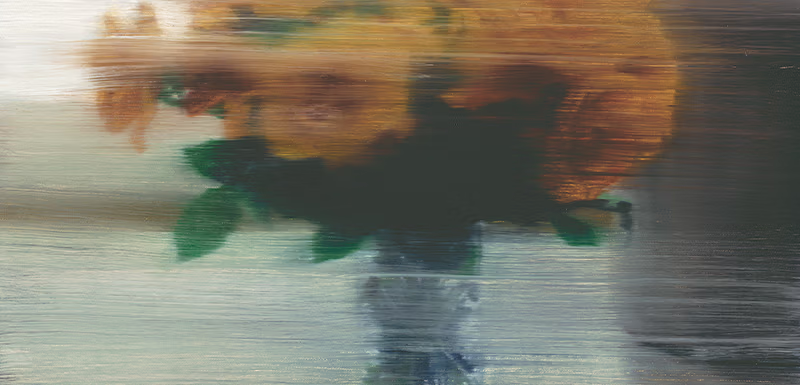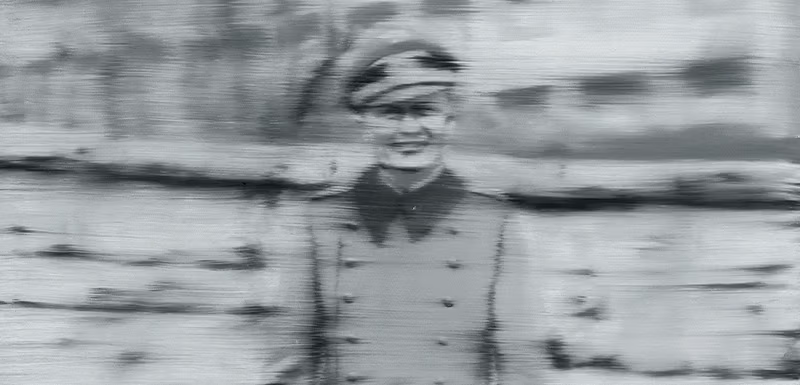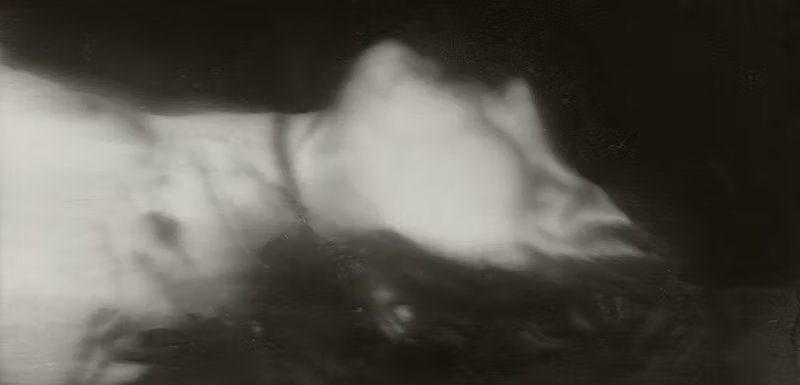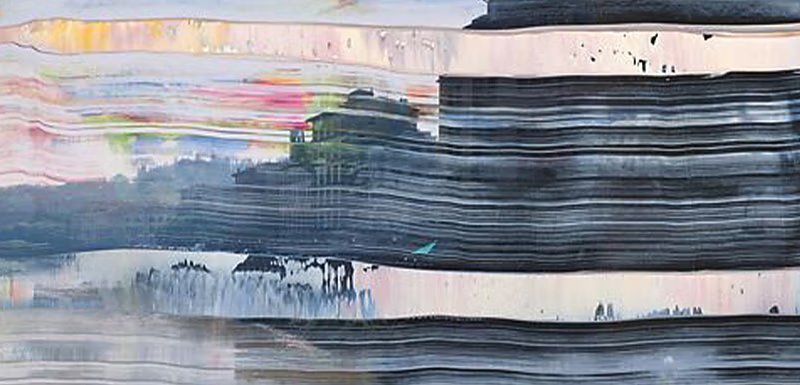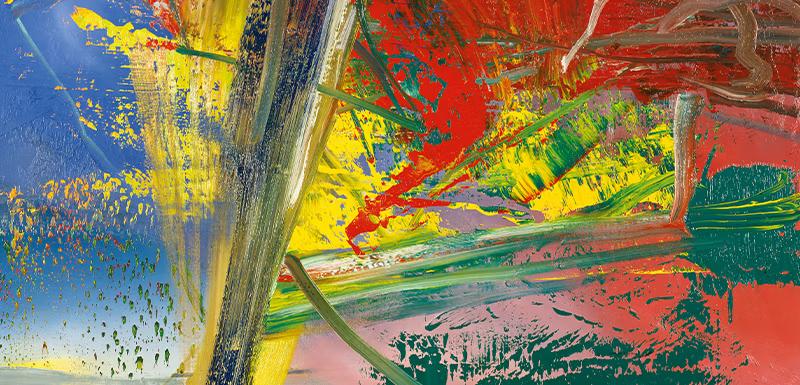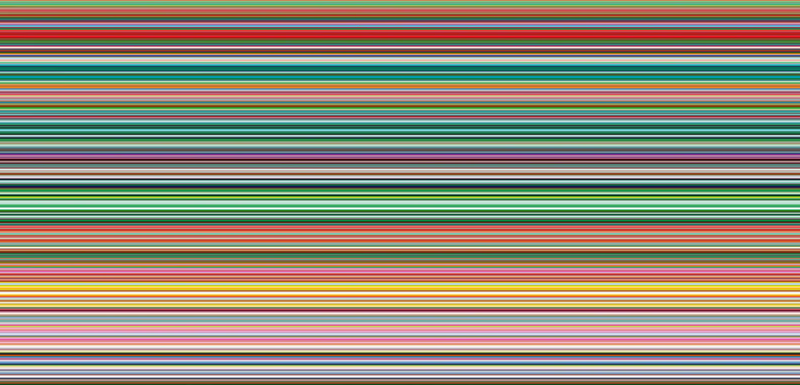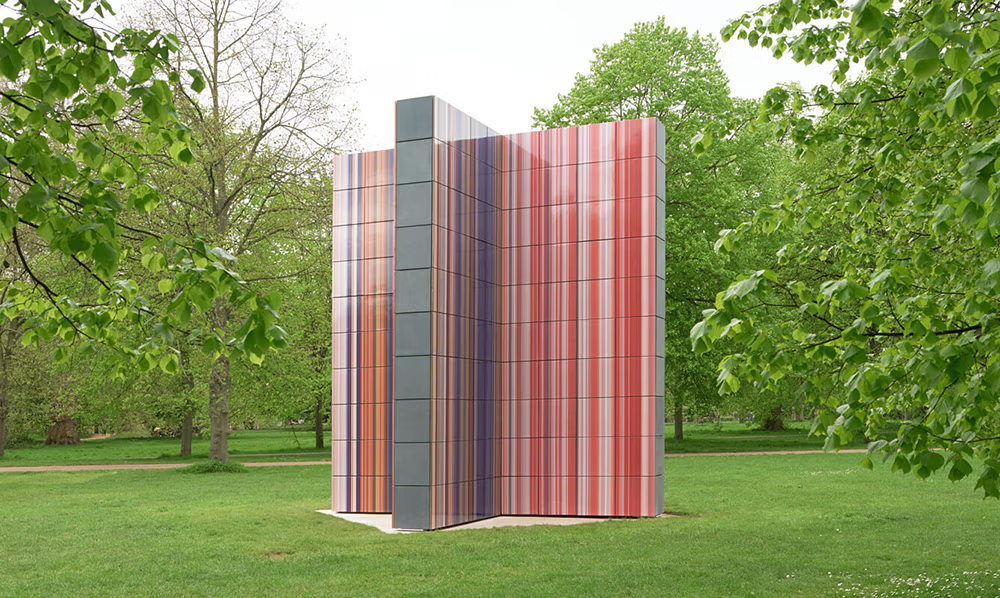Bknz. Gerhard Richter, Birkenau, (Detail), 2014 Oil on canvas, each 260 x 200 cm. Catalogue Raisonné 937 /1-2-3-4, (Gerhard Richter Art Foundation tarafından Neue Nationalgalerie, Staatliche Museen zu Berlin’e uzun süreli ödünç verilmiştir.)
gerhard richter
birkenau paintings: psychological excavation areas
GÜLAY YAŞAYANLAR
"
These prIvIleged abstractIons In whIch Gerhard RIchter confronts the Holocaust, startIng from photographIc frames taken In NazI exterminatIon camps, brIng to the present trauma moments that evoke the thresholds and voIces through whIch annIhIlatIon passed. Moreover, here, wIth the ImagIstIc transformatIon of Images resIdIng In memorIes as an archetype of the collectIve unconscIous, It sIlently and profoundly vIsualIzes a ceremony of bare lIfe where scattered fIgures merge Into one another.
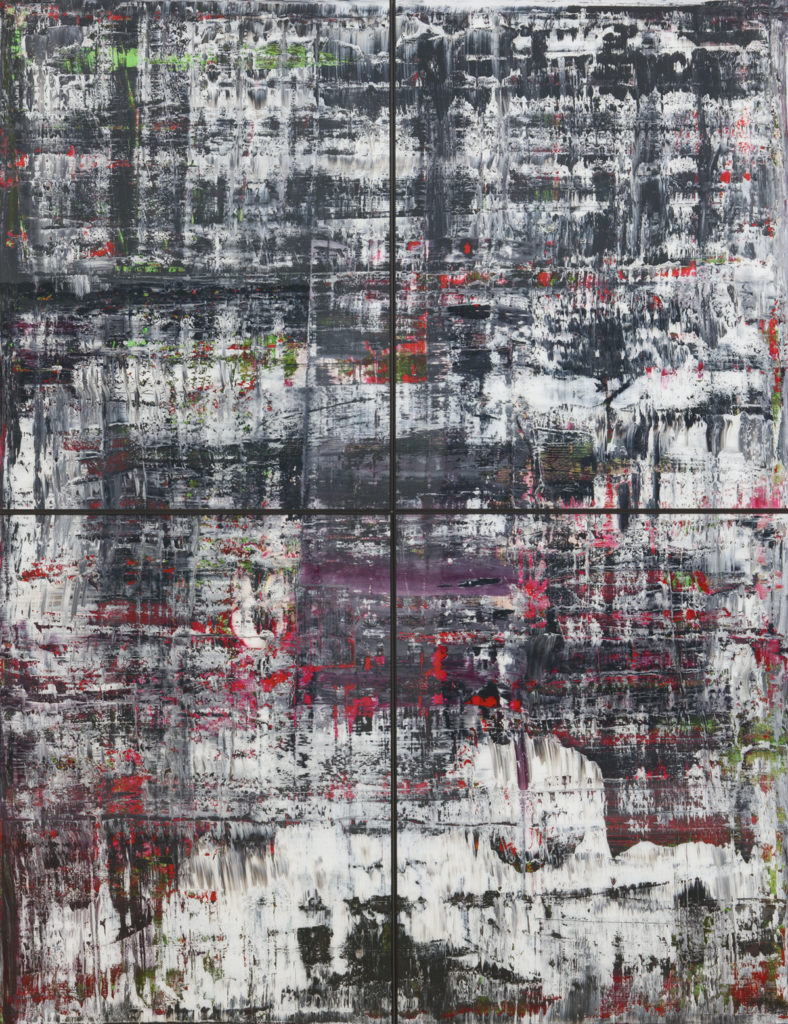
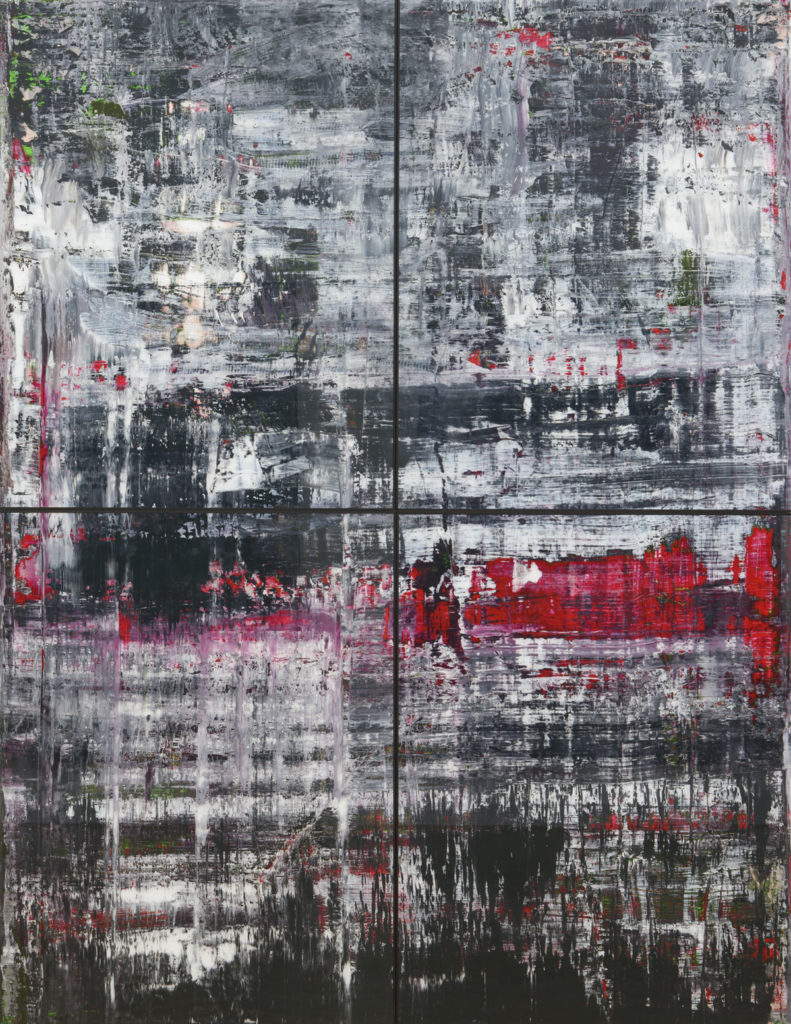
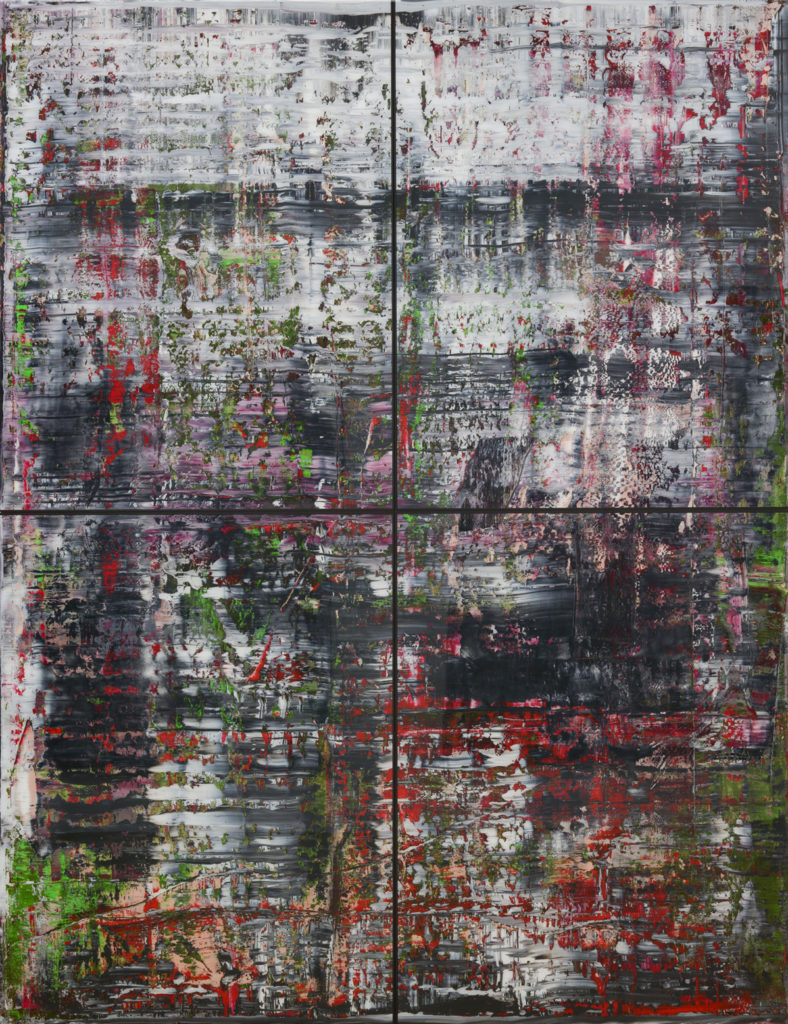
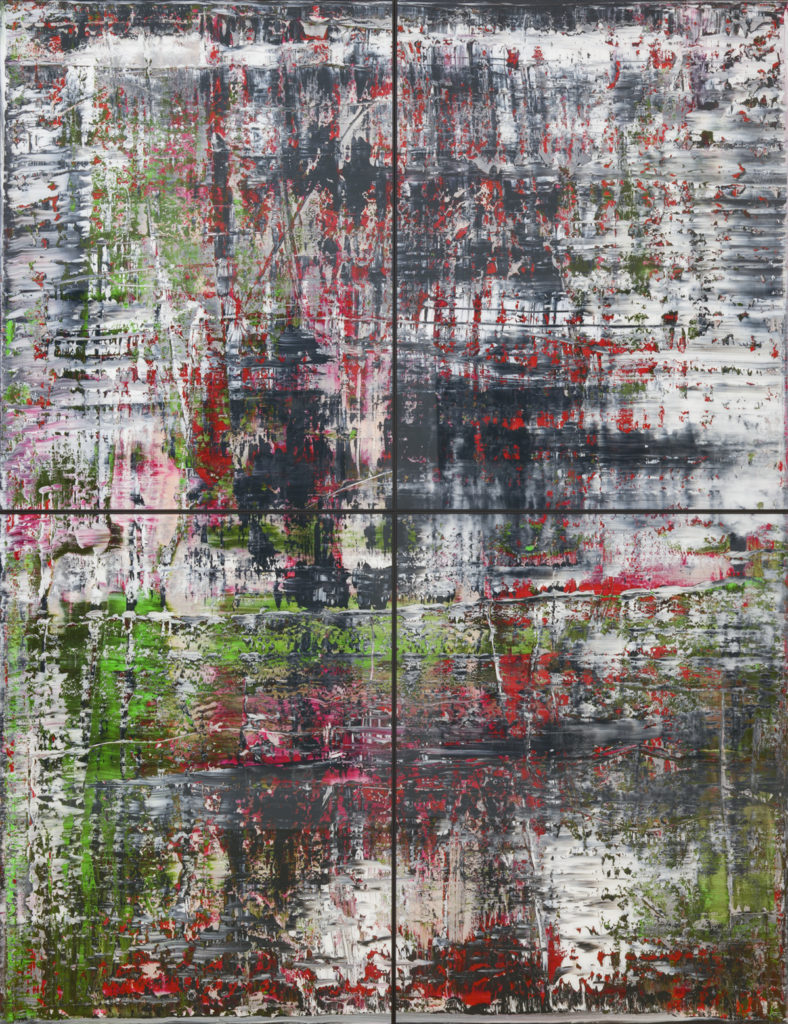
Bknz. Gerhard Richter, Birkenau, 2014, (Detail), Oil on canvas, each 260 x 200 cm. Catalogue Raisonné 937 /1-2-3-4, (Gerhard Richter Art Foundation tarafından Neue Nationalgalerie, loaned to the Staatliche Museen zu Berlin for an extended period.)
Gerhard Richter’s art is structured upon existential concepts determined by a nihilistic defense mechanism. Here, it is possible to speak of a visual ideology in which especially darkness and emptiness are glorified. This approach, which traces the records related to collective memory and transforms them to validate an irrational order, also stands close to schizoid analyses, to a blurred and abstract representation. In a hazy field established with the components of an authentic reality and scraped paint fragments, it disrupts representation through mise-en-scènes of movement, shock, and annihilation. It draws attention to historical traumas (as seen in the four-painting Birkenau Paintings) through damaged surfaces and abstract patterns that emerge.
imageless paintings that darken memory
The Birkenau Paintings are the product of a fundamental experience that essentially extracts from the painting surfaces the bodies annihilated by a genocide. Here, mysteriously, reality knotted to a phenomenon of annihilation becomes concretized in a stratified dynamic surface-texture continuity, transformed into a metaphor of collectively held mourning. Therefore, it is extremely clear that these paintings, despite their transformed imagery of destruction, radiate an aura that eliminates death.
These privileged abstractions in which Gerhard Richter confronts the Holocaust, starting from photographic frames taken in Nazi extermination camps, bring to the present trauma moments that seemingly evoke the thresholds and voices through which annihilation passed. Moreover, here, with the imagistic transformation of images residing in memories as an archetype of the collective unconscious, it silently and profoundly visualizes a ceremony of bare life where scattered figures merge into one another.
These psychological excavations undertaken with a scraping device on complex and compressed grounds are actually, on one hand, a manifestation of conflicts experienced in the mind, and on the other hand, a history and truth sequence where traces or images overflowing from common memory are covered and reconstructed. Therefore, each surface created is a provocative and experimental field where the independent variables of imaginative power problematize collective memory and burning realities. And here, Richter’s passionate curiosity and demand for freedom, shaped by unstoppable motivation, is fully reciprocated with dynamic and variable abstractions.
NOTLAR
Birkenau Paintings (2014) is based on four photographs secretly taken at the Auschwitz-Birkenau death camp. Richter began working on these images, intervening with paint, covering them up. By erasing the resulting layers, he creates torn surfaces. This action reflects the artist’s audacity to transform, with the simultaneous and magnificent contrast and harmony between the gloomy documents of historical trauma and the reproduced photo-paintings. Thus, it questions art’s ability to reckon with issues of identity and collective memory. Although the sombre images of historical trauma hidden beneath these paintings are no longer visible, they are certified as emotionally charged representations that somehow reflect traces of memory.

the bitter reality of a historical reckoning
On the other hand, the Birkenau Paintings can also be viewed as the results of a surface analysis where paradigms are reversed. Here, in place of a model that conveys photographic reality, a symbolic and abstract structuring established with forms of feeling has been substituted. Richter’s magic appears precisely at this moment of deep rupture. He reveals these paintings by scraping the petrified gray color blocks remaining from Birkenau, monumentalizing the bitter reality of a historical reckoning. Thus, reproducing images of a state of exception that will not be erased from memories, Richter realizes a dramatic and effective representation that reflects his own complexity and tension in these paintings that both contain and equally conceal a multidimensional truth. And more importantly, in Birkenau, he keeps alive the common belief that once probed, the crimes committed, the horror and chaos experienced, will continue to darken memory forever.
Gülay Yaşayanlar Copyright © Kasım 2025, All Rights Reserved

prof. gülay yaşayanlar Art writer and curator. He has numerous publications on current issues, theoretical debates and prominent artist attitudes in the field of plastic arts. He lives and works in Izmir and London.
RELATED CONTENTS
EXHIBITION / 2021-2022
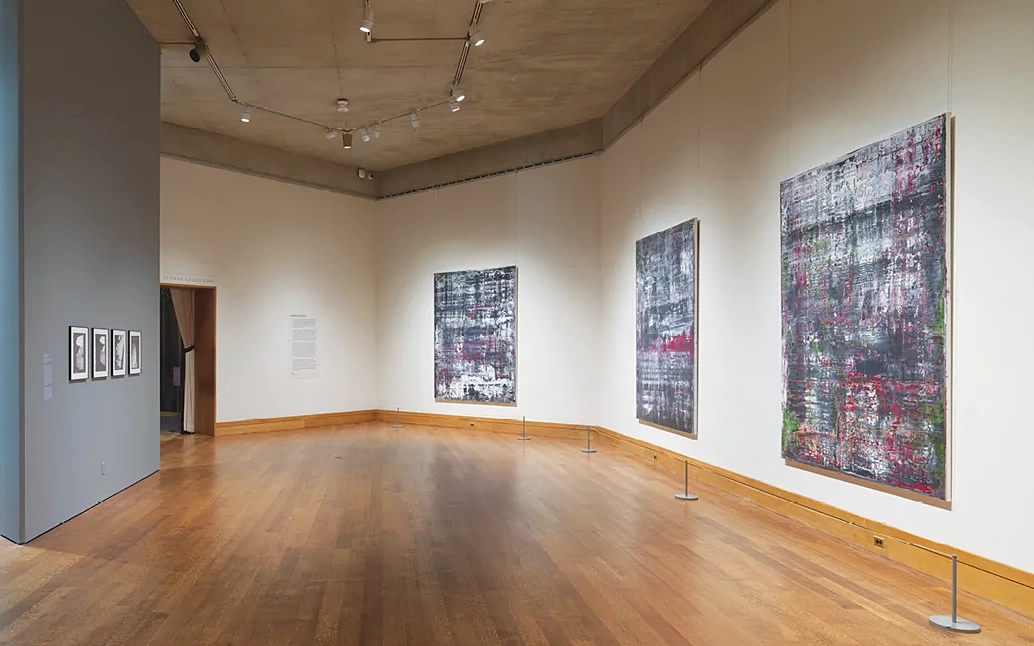
THE METROPOLITAN MUSEUM ART
05 September 2020 - 18 January 2021, The Metropolitan Museum of Art, New York, USA
READ MORE
TWO BOOKS
Buchloh, Benjamin H. D, Gerhard Richter’s Birkenau-Paintings, Monography, Publishe by: Verlag der Buchhandlung Walther König, Hardcover, 40 pages, January 2016, Köln, Germany.
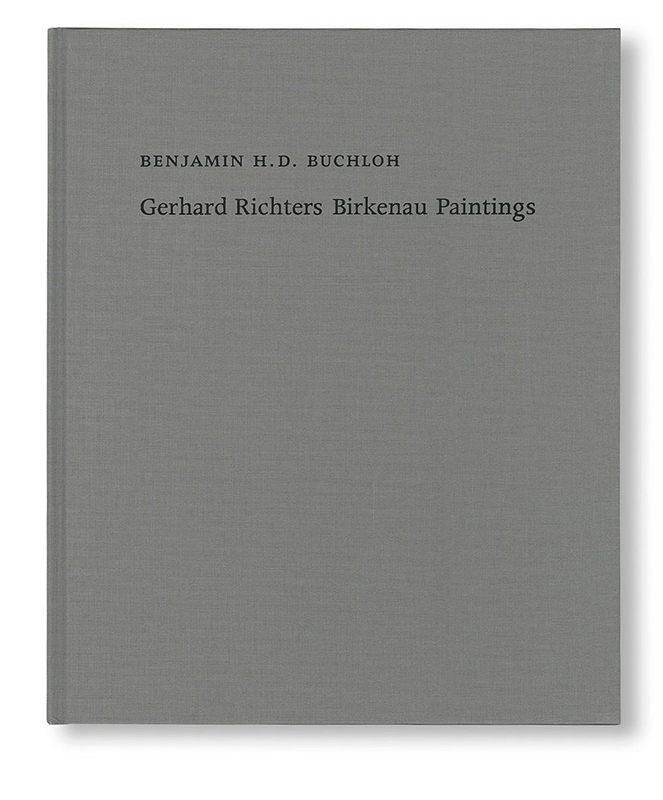
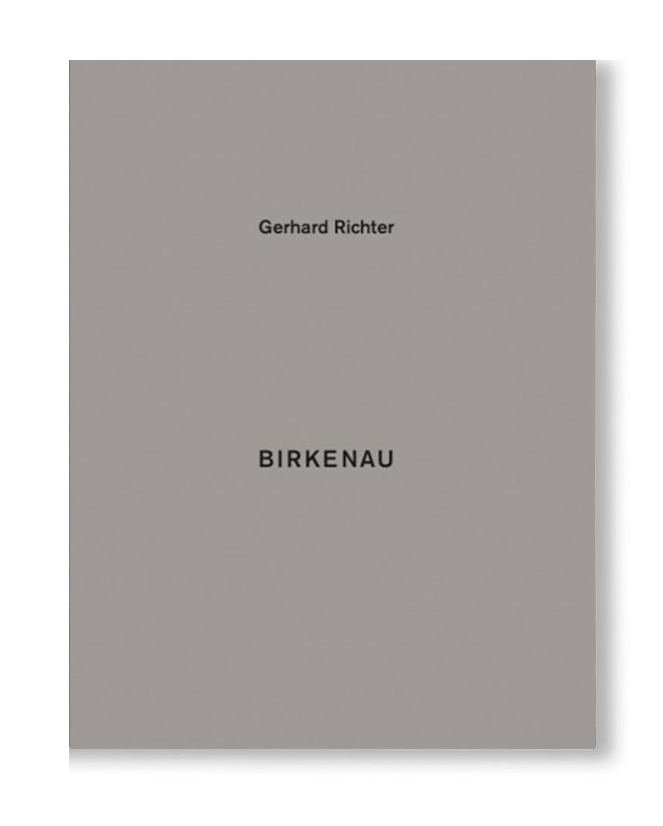
Gerhard Richter, Birkenau-Published by: Walther König, English,Hardcover, 144 pages, February 2016, Köln, Germany.
PAINTING SERIES AND PROJECTS
DRAWINGS

Richter stopped painting on canvas in 2017. After this date, he focused on drawing. These works, drawn and painted on A4 paper, consist of independent experiments produced with coloured ink and pencil. They resemble diaries kept in drawings. They directly reflect the artist’s intellectual and emotional intensity in a fluid manner. In addition to rulers, compasses and other tools, he uses erasers and scrapers, just as he does in his paintings. He also employs frottage techniques and solvent chemicals to create stains. This experimental approach, which increasingly evokes the visuality of maps, filled with vibrating contours, erasures and stains, reflects a strange spontaneity in exploring the visual possibilities of drawing as a medium. It seems to be stuck in the flow between perception and reflection, chasing imagination, continuing to find things that are not there or missing what is right in front of us.
STRIP-TOWER
Strip-Tower (2023) is a project that expands on Richter’s sixty years of research in the fields of painting, photography, digital reproduction, and abstraction. The artist, who began developing the Strip Paintings series in 2010, transformed his photographed and scanned work Abstract Painting 724-4 into horizontal and vertical strips by dividing it into two strips in a digital environment, then four, eight, sixteen, and thirty-two strips. The vertical strips of the painting were stretched horizontally, laminated onto aluminium, and covered with plexiglass. The colourful striped ceramic tiles that form Strip-Tower are a dense composition covering intersecting vertical panels. This work is essentially based on Richter’s ongoing interest in reflections, systems, and repetitions. It has become a symbolic monument to the artist’s approach of self-examination through painting, photography, digital reproduction, and abstraction, which has occupied his practice for over sixty years. [https://www.serpentinegalleries.org/whats-on/gerhard-richter-strip-tower/]
CAGE PAINTINGS
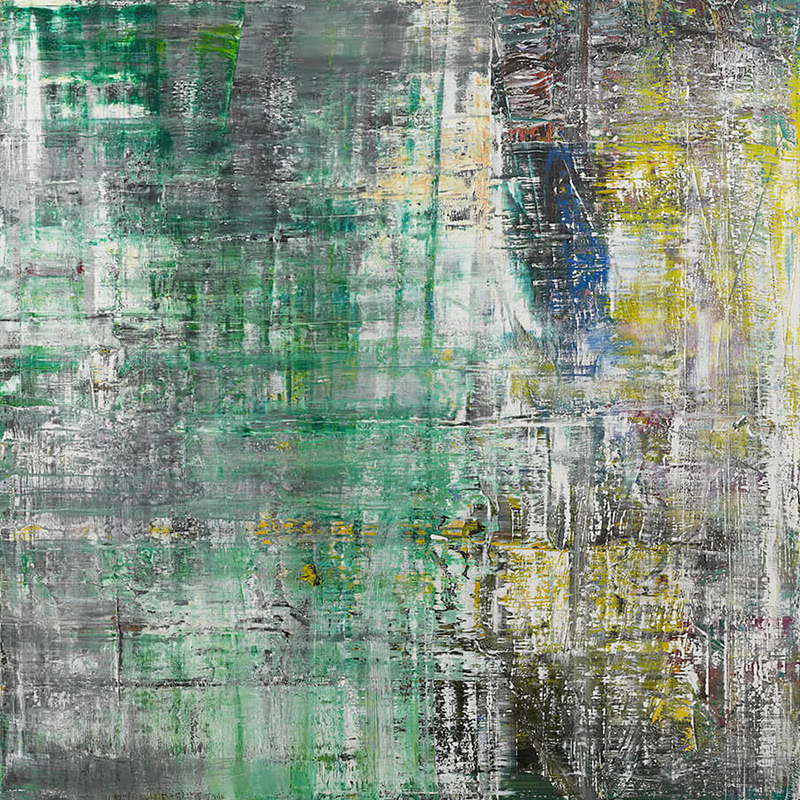
19 April – 26 June 2021, Gagosian Gallery, New York, USA
A series of paintings designed by Gerhard Richter in 2006 is named after the American experimental composer John Cage. The Cage paintings are the result of gradual and layered painting and erasure processes. Their surfaces consist of erased and scratched marks, brushstrokes, and painted areas that can appear delicate and fluid as well as coarse and rigid. Interested in John Cage’s ideas about ambient sound and silence, Richter took a radical approach in this series, refusing to use his hands and instead employing his famous eraser. Richter also created a six-part series of prints in 2020 that continues the influence of this series. Both in their painted and printed forms, the Cage paintings are an important series that brings together a painterly process that questions the emotional impact of colours and transforms into improvisation through dynamic body movements.
ATLAS
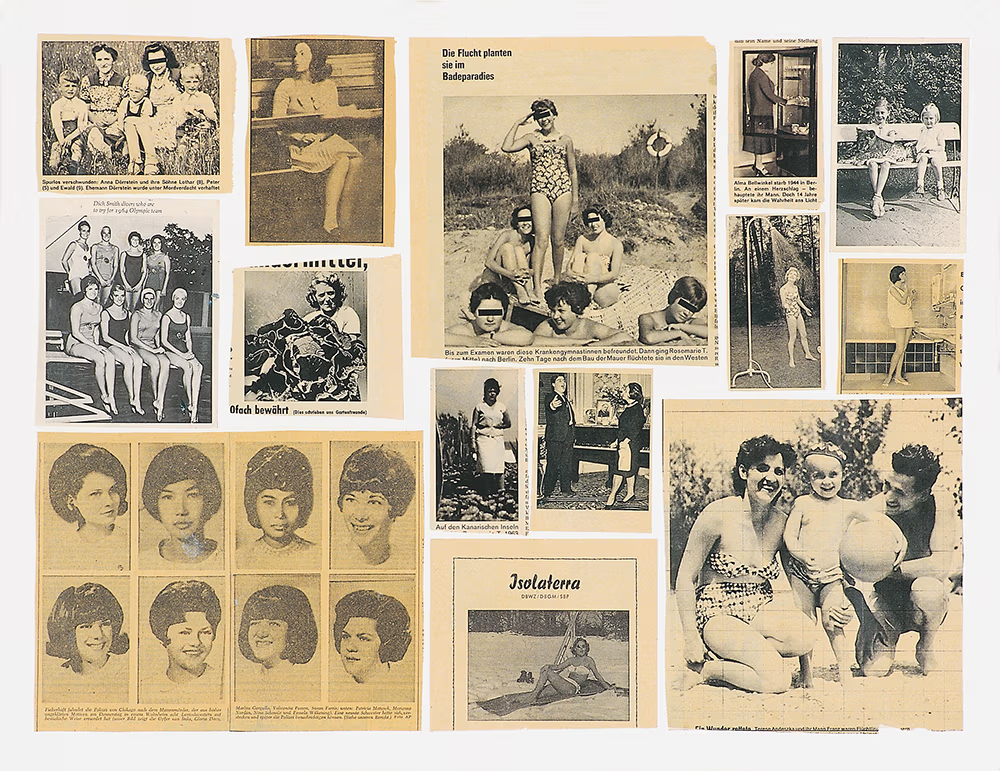
STRIP PAINTINGS

Richter’s Strip paintings are an original and conceptual series that emerged in the later stages of his career. They are quite different from his abstract works. They consist of his abstract paintings being transformed into thin coloured strips based on digital photographs of them. The Strip series is a process of further abstracting an already abstract painting. Here, Richter focuses on the transformation of the image and the issue of data loss or gain. This new painting practice, which means the complete disappearance of the artist’s hand, produces visually stimulating structures consisting of coloured vertical or horizontal lines. On the other hand, this series of paintings, which began in 2011, is considered one of the most radical expressions of Richter’s thoughts on the process of making art. It involves a deep questioning of fundamental issues such as what a painting is, the role of the artist, and image production in the digital age.
4900 COLOURS

4900 Colours consists of bright monochrome squares randomly arranged in a grid pattern to create dazzling kaleidoscopic layers of colour. The 196-square panel, comprising 25 coloured squares, is designed to be configured in various variations, from a single large-scale piece to numerous smaller images. Richter developed a special version consisting of 49 paintings for the Serpentine Gallery in 2008. 4900 Colours was partly inspired by Richter’s design for the south transept window of Cologne Cathedral, which replaced stained glass windows destroyed during the Second World War. The 4900 Colours concept played an important role in its development. The development of 4900 Colours was also influenced by Richter’s first series in 1966, grid paintings created by copying industrial colour charts produced by paint manufacturers on a large scale. As in his photographic paintings, his use of found material as a source eliminated the artist’s subjective compositional preferences; however, the Colour Chart Paintings took this a step further by eliminating the hierarchy between subject and representational purpose and focusing on colour to create an egalitarian artistic language.
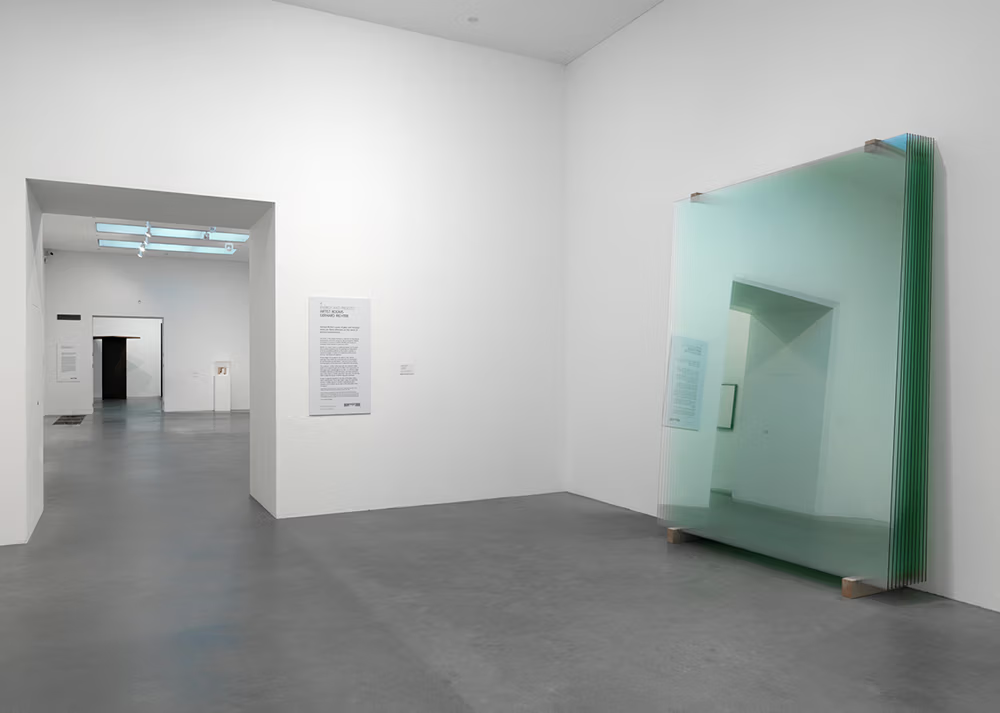
GLASS AND MIRROR PANELS
Gerhard Richter has produced glass and mirrored works that contain genuine reflections on the nature of pictorial representation. The artist seeks to explore the possibilities of these materials in order to reproduce visual reality or to continue experimenting with colours, textures, techniques and gestures. He produced his first glass works in 1967, thereby opening up a new field of work and thought related to debates on representation and perception. For example, the sculpture 11 Panels (2004) utilises the material’s ability to be viewed from within as well as its reflective properties. The transparency of each glass panel, leaning against the wall at different angles, multiplies the reflections into distorted shapes, which constantly change as the viewer approaches and moves away from the work. The blurring effect is reminiscent of that seen in Richter’s figurative paintings.
Gerhard RIchter Catalogue RaIsonné / Volume 1-6
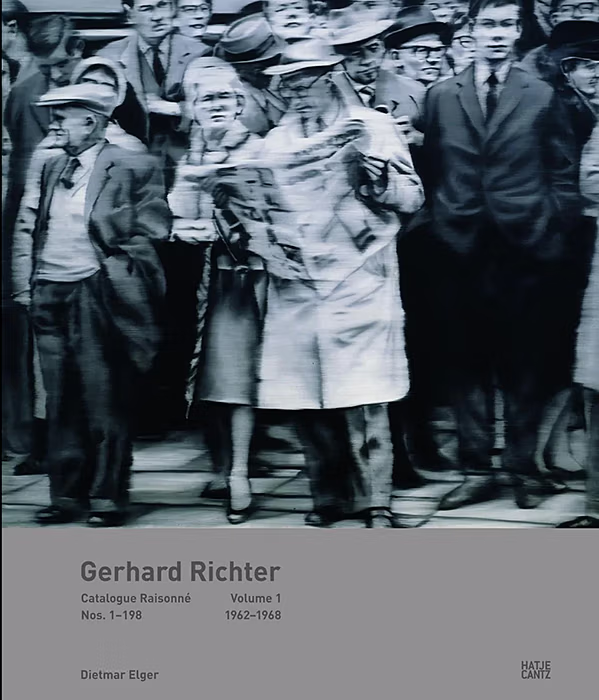
Dietmar Elger, Gerhard Richter Catalogue Raisonné, Volume 1, 1962-1968, Edited and Texts by: Dietmar Elger, Graphic Design: Gabriele Sabolewski, Neil Holt, German, English, Publishing by: Hatje Cantz, October 2011, 512 Pages, 539 Photos, Clothbound with dustjacket, 267 mm x 309 mm.
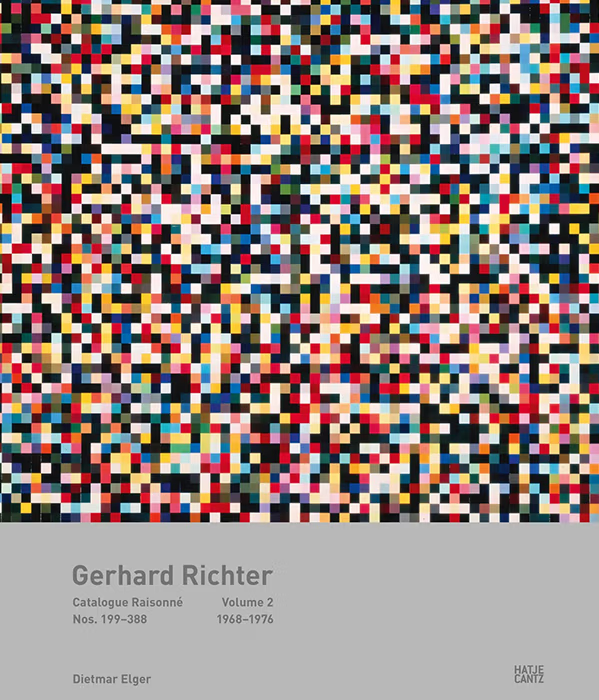
Dietmar Elger, Gerhard Richter Catalogue Raisonné, Volume 2, 1968-1976, Edited and Texts by: Dietmar Elger, Graphic Design: Gabriele Sabolewski, Neil Holt, German, English, Publishing by: Hatje Cantz, March 2022, 528 Pages, 700 Photos, Clothbound with dustjacket, 263 mm x 301 mm.
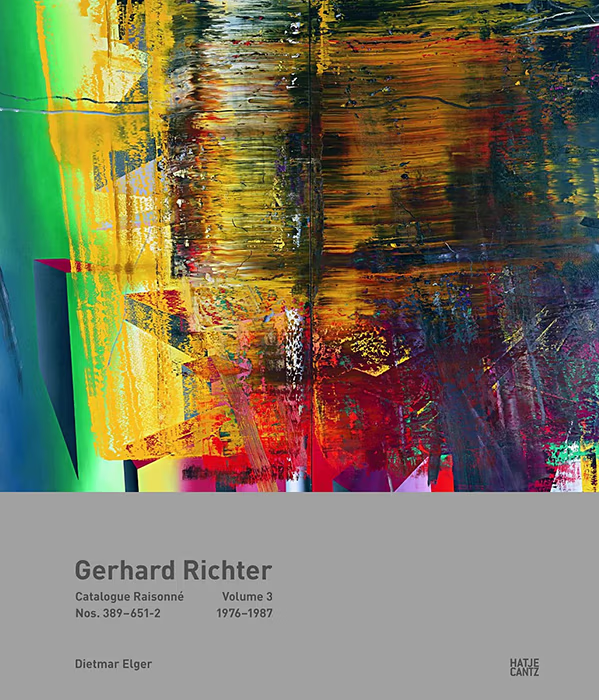
Dietmar Elger, Gerhard Richter Catalogue Raisonné, Volume 3, 1976 – 1987, Edited and Texts by: Dietmar Elger, Graphic Design: Gabriele Sabolewski, Neil Holt, German, English, Publisher: Hatje Cantz, June 2013, 640 Pages, 702 Photos, Clothbound with dustjacket, 266 mm x 303 mm.
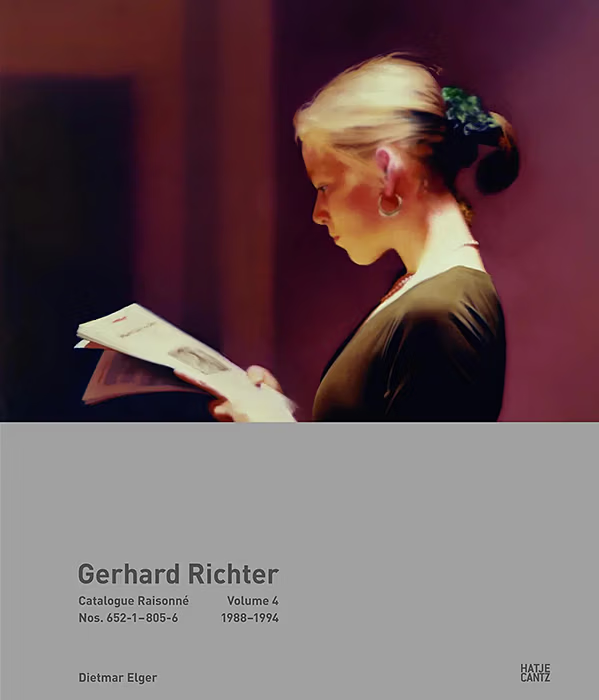
Dietmar Elger, Gerhard Richter Catalogue Raisonné, Volume 4, 1988-1994, Edited and Texts by: Dietmar Elger, Graphic Design: Gabriele Sabolewski, Neil Holt, German, English, Publishing by: Hatje Cantz, June 2015, 600 Pages, 645 Photos, Clothbound with dustjacket, 257 mm x 301 mm.
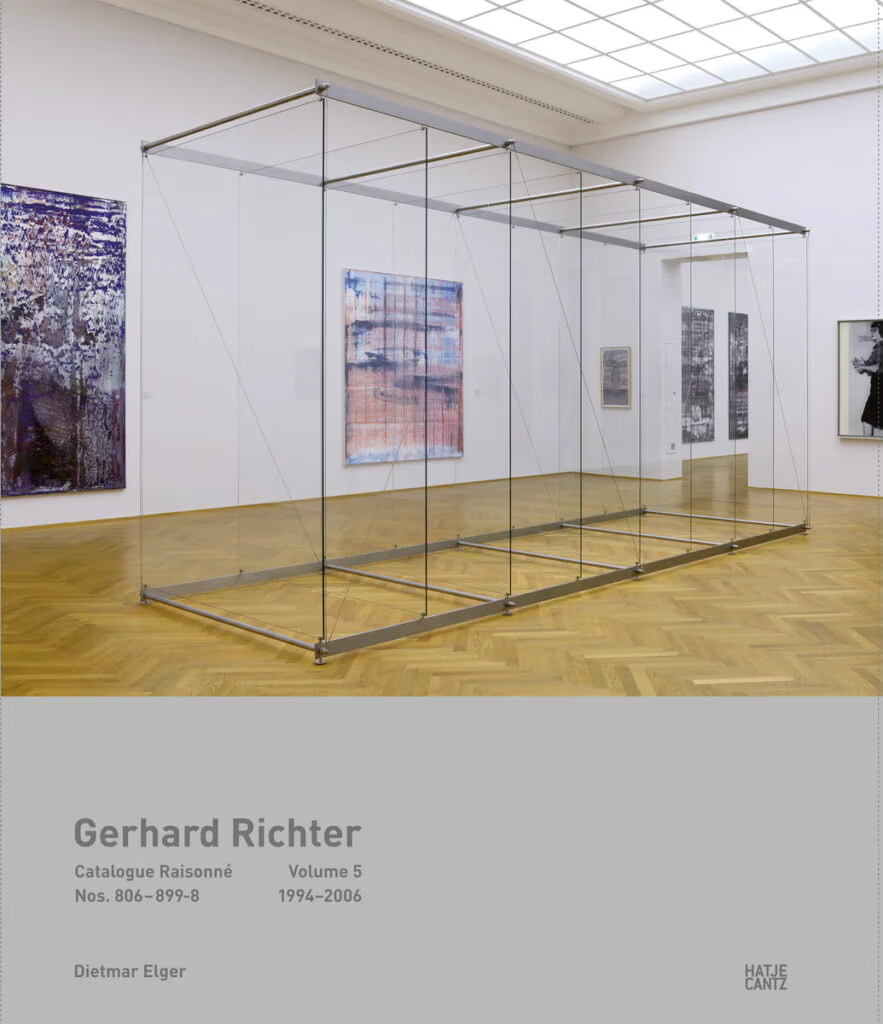
Dietmar Elger, Gerhard Richter Catalogue Raisonné, Volume 5, 1994-2006, Edited and Texts by: Dietmar Elger, Graphic Design: Gabriele Sabolewski, Neil Holt, German, English, Publishing by: Hatje Cantz, April 2020, 600 Pages, 700 Photos, Clothbound with dustjacket, 266 mm x 308 mm.
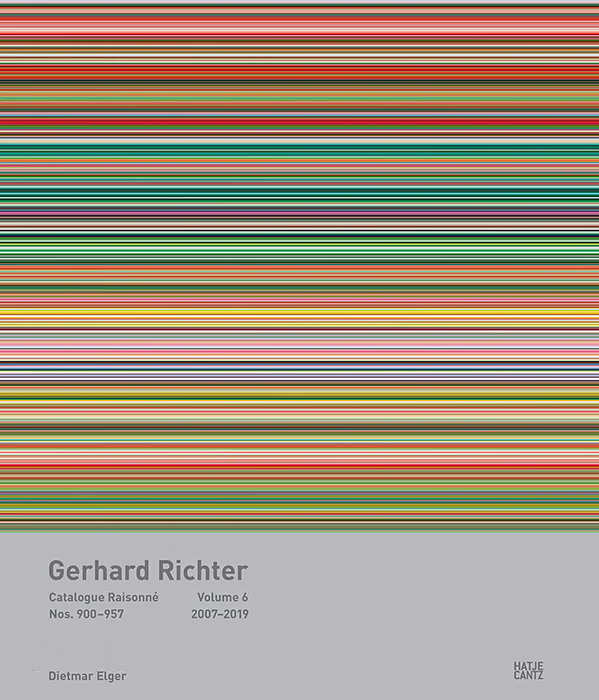
Dietmar Elger, Gerhard Richter Catalogue Raisonné, Volume 6, 2007-2019, Edited and Texts by: Dietmar Elger, Graphic Design: Gabriele Sabolewski, Neil Holt, German, English, Publishing by: Hatje Cantz, March 2022, 528 Pages, 700 Photos, Clothbound with dustjacket, 263 mm x 301 mm.
GERHARD RICHTER
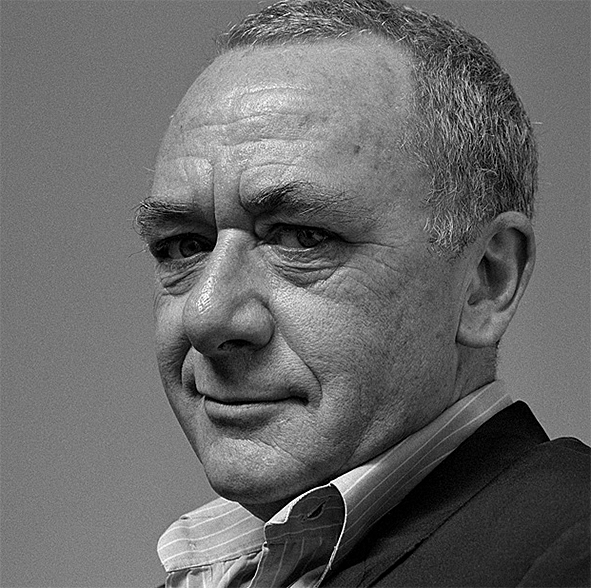
Gerhard Richter (b. 1932) was born in Dresden, Germany. He spent his childhood and youth in Waltersdorf. Between 1951 and 1956, he studied art at the Dresden Hochschule für Bildende Künste. In 1959, he visited Documenta II in Kassel, West Germany, and this experience inspired him to change his artistic direction. He left East Germany in 1961. He resumed his studies at the Staatliche Kunstakademie in Düsseldorf. In 1972, he was selected to represent Germany alone at the Venice Biennale. The artist, who has held solo exhibitions at many renowned galleries and museums, has produced a wide variety of works that appear extremely complex within a stylistic transition derived from the relationship between photography and painting. The artist, who takes a deep look at the issue of representation and the material reality of art, lives and works in Cologne. (Photo: Timothy Greenfield Sanders)
GUIDE 2025 – 2026 PUBLISHED

İZMİR - LONDON
saglamart; dinamik bir anlayış ile hareket eden, kültür-sanat ortamındaki olay ve olgulara, sanatçı tavırlarına, yapıtlara ve yayınlara odaklanan bağımsız bir yayın etkinliğidir. Tüm hakları saklıdır. Görüntü ve yazılar izinsiz kullanılamaz. / saglamart is an independent publishing initiative driven by a dynamic vision, focusing on events and developments in the cultural-artistic landscape, artist perspectives, works, and publications. All rights reserved. Images and texts cannot be used without permission.

